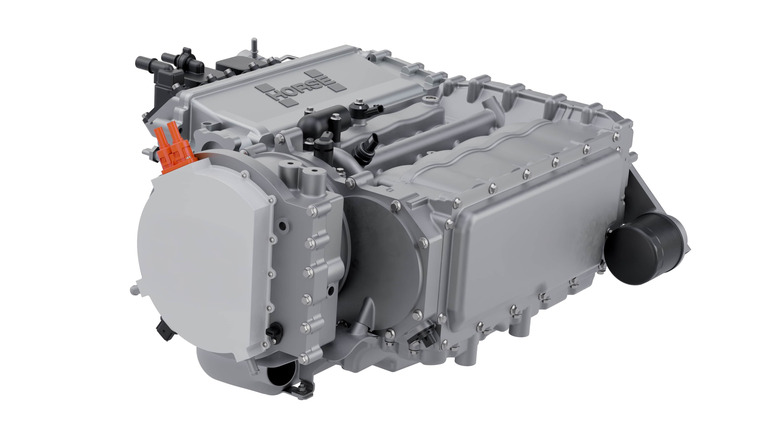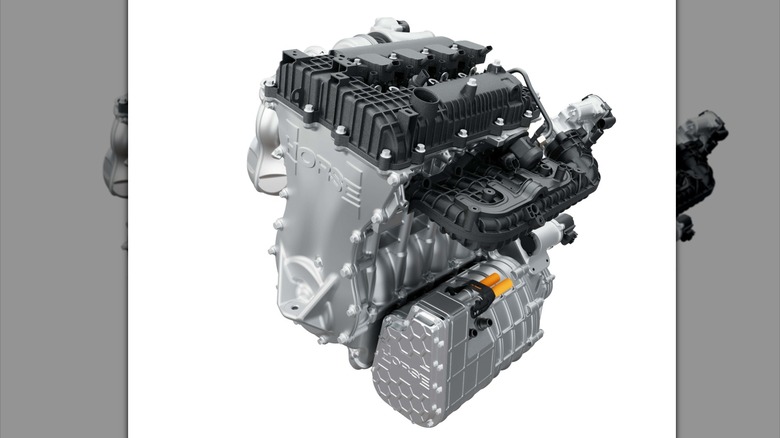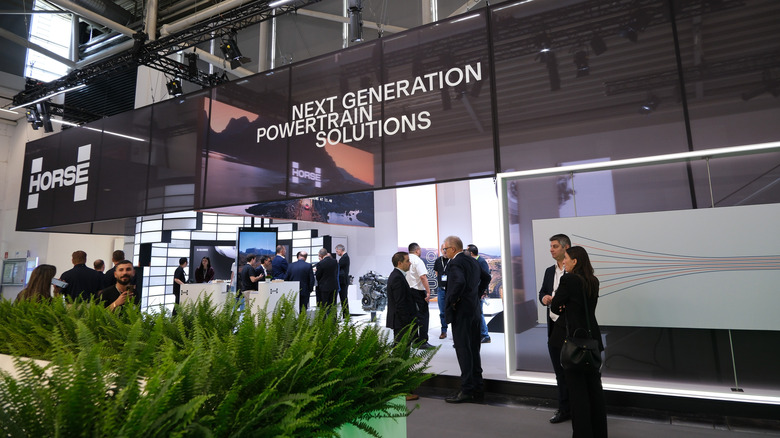This Cutting Edge Engine Crams 161 HP Into A Briefcase-Sized Package Perfect For EV Retrofits
Horse Powertrain has introduced the C15, a 1.5-liter four-cylinder engine that's designed to turn electric vehicles into range-extended hybrids. The company describes it as "briefcase-sized," with measurements around 19 x 21 x 11 inches, small enough to slide into a variety of EV layouts without heavy redesigns. It's not a drive unit, but a generator set. That means it doesn't connect to the wheels. Instead, it runs at a steady rpm to power an integrated generator that maintains battery charge.
The C15 produces 94 horsepower in its naturally aspirated version, which targets smaller vehicles, equivalent to the European B- and C-segments. A turbocharged variant pushes output to 161 horsepower, aimed at larger D-segment cars and light commercial vehicles. Both options are Euro 7–compliant, and they can run on gasoline, ethanol, methanol, flex fuels, or synthetic fuels. The design makes it adaptable for front or rear placement, installed horizontally or vertically, depending on how automakers want to configure their vehicles.
Horse Powertrain positions the C15 as a practical fix for EV range concerns. By adding a liquid-fuel generator, automakers can shrink battery pack sizes without cutting real-world range, lowering vehicle cost, which in itself may be the biggest problem for EVs, and weight. The unit is compact enough to fit in spaces like a frunk, which makes it attractive to OEMs that want to expand hybrid offerings with minimal re-engineering.
Beyond the C15: a broader hybrid strategy
At IAA Mobility 2025, Horse also presented its Future Hybrid System, a full powertrain module that replaces a BEV's front electric drive unit. The setup combines a 1.5-liter engine, a transmission, one or two motors, and power electronics into a single package.
Two versions are being developed. The Ultra-Compact configuration measures 26 inches wide, placing a motor between the engine and transmission. The Performance configuration expands to 29 inches, adding a second motor at the transmission output shaft for higher output, with a total output of up to 349 horsepower and 380 lb-ft of torque. Both designs are built to save space compared to conventional hybrid layouts, cutting front overhang by as much as 150 mm and leaving room for HVAC systems or other front-end components.
OEMs can now easily produce hybrid vehicles and range-extended electric vehicles on their existing electric platforms. By pairing the front module with a rear-mounted motor, manufacturers can configure AWD, which is different than 4WD, systems without major redesign. The fuel support system includes gasoline, E85 ethanol, methanol, and synthetic fuel options, which enable operation in various market environments. Horse expects the Future Hybrid System to reach the market in 2027. Like the C15, it's pitched as a drop-in solution that lets automakers broaden lineups quickly while managing cost pressures.
Efficiency gains with new materials and tech
Horse Powertrain is also working on core component innovations to raise efficiency across its hybrid lineup. One highlight is an amorphous iron stator for electric motors. Whereas traditional stators use stacked steel plates about 0.20 mm thick, Horse has reduced this to 0.02 mm using amorphous steel with a non-crystalline atomic structure. The result is a 50% cut in iron losses, less heat buildup, and a claimed efficiency of 98.2%. Horse says this sets a new benchmark for automotive motors, with peak output reaching 188 horsepower and 266 lb-ft of torque.
Another development is a GaN-based generator module. By using gallium nitride semiconductors instead of silicon, Horse managed to shrink the generator size by 20% while boosting thermal performance. The generator produces 67 hp at 4,500 rpm with 95% efficiency, operating in extreme temperatures from -40 to 230 degrees Fahrenheit. GaN really is all the rage these days, even being used in laptop and phone chargers.
Taken together, these innovations support Horse Powertrain's message that the transition to electrification won't rely on one technology alone. Compact range extenders like the C15, integrated hybrid modules, and more efficient motors give automakers multiple pathways to balance range and emissions goals. By offering modular, drop-in solutions, Horse aims to reduce complexity for OEMs while adapting to shifting policies and consumer expectations.


